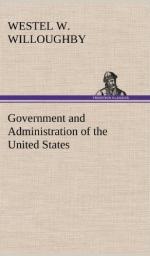The precise amount of effective work done by Congress during the two sessions of the Fiftieth Congress was as follows: There were 4,000 bills introduced in the Senate and 145 Senate joint resolutions: of this number 1,127 bills and joint resolutions passed the Senate, and 554 were either postponed indefinitely or referred to the Court of Claims, so that the total number on which final action was taken by the Senate was 1,681. The committee on enrolled bills examined 667 Senate bills and joint resolutions and sent them to the President and 591 became laws, the number of vetoes, including “pocket vetoes,” being 76.
The House of Representatives passed 1,561 House bills and sent them to the Senate, and the Senate passed 1,347 of them, leaving 214 to perish. The House passed 56 House joint resolutions and the Senate passed all of them but eight. The House passed, therefore, 2,284 House and Senate bills, and the Senate passed 2,522.
The first session of the Fifty-first Congress (1889-90) was, with one exception, the longest ever held.[1] During the session there were introduced in the House 12,402 bills and joint resolutions, and in the Senate 4,570, making a total of 16,972. The total number of acts passed was 1,335 as against 1,790 for both sessions of the Fiftieth Congress. Of these 881 were pension bills.
[Footnote 1: The longest session was the long session of the Fiftieth Congress.]
Congress ordinarily assembles at noon, and remains in session until 4 or 5 p.m., though towards the end of the term it frequently remains in session until late in the night. The first thing upon assembling in the morning is prayer. On Mondays, as stated, there is next a roll-call of States for the introduction of bills. Sometimes a committee is instructed to prepare and bring in a bill of its own, without waiting to have one introduced and referred to it. Reports from committees are heard during morning hours on Tuesdays, Wednesdays, and Fridays, and on Mondays after the introduction of bills. Friday is a day usually set apart for the consideration of private measures. On Saturdays Congress seldom sits.
There is still one feature of Congressional government which needs explanation, and that is the caucus. A caucus is the meeting of the members of one party in private, for the discussion of the attitude and line of policy which members of that party are to take on questions which are expected to arise in the legislative halls.
Thus, in Senate caucus, is decided who shall be members of the various committees. In these meetings is frequently discussed whether or not the whole party shall vote for or against this or that important bill, and thus its fate is decided before it has even come up for debate in Congress.
CHAPTER X.
The Cabinet and Executive Departments.




